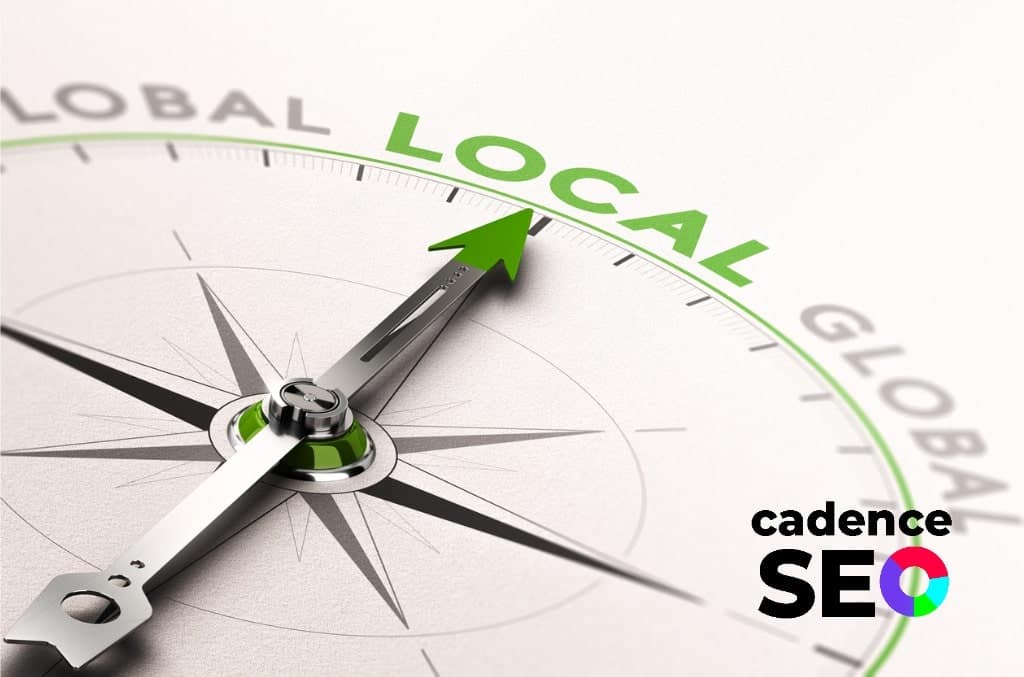Search engine optimization (SEO) plays a critical role in the digital marketing of an enterprise’s products or services. It helps increase a brand’s visibility, rank higher in search engine results pages (SERPs), and draw traffic to their website. However, SEO is not one-size-fits-all for companies competing in the digital marketplace. Each business has its distinct set of goals and needs, making it important to identify which kind of SEO strategy should be implemented: Local SEO or Global SEO.
What is Local SEO?
As the name suggests, local SEO focuses on optimizing a website to target the community around your business location and increase brand awareness from local searches. With the ever-increasing use of mobile devices like smartphones, tablets, and laptops, most consumers find the products or services they’re looking for online rather than through other resources like printed ads. So, it’s safe to say that if you have a brick-and-mortar location visitors can walk into, you’ll benefit from implementing a local approach in your SEO strategy. Small businesses that want to target people from the local area are the ones that will benefit the most from a local SEO strategy. If most people learn about local businesses online, imagine how many small and local business owners are missing opportunities without local SEO!
What is Global SEO?
Also called international SEO, global SEO focuses solely on boosting your website’s visibility on a global scale. Essentially, with a global SEO strategy, you’re trying to appeal to a worldwide target audience and attract customers internationally via global search engines.
While Google dominates a large portion of the market share, there are other search engines you should optimize for to compete within the global market. Global SEO is perfect for businesses that are not limited to specific locations. Still, global SEO also means more generalized targeting. The competition level will also increase since international SEO focuses on large-scale generic keywords. Audience segmentation could help create subgroups out of your target audience, making your global SEO marketing strategy more effective.
What is the Key Difference Between Local SEO vs Global SEO?
One of the most important elements in an SEO marketing strategy is identifying an enterprise’s target audience. For local SEO and global SEO, the key difference is how they each focus on attracting their target audiences. Local SEO hones in on a specific geographic location, while global SEO seeks to engage a much wider international audience. In order to accomplish their respective goals, local and global SEO utilize different strategies. For instance, the optimization of specific keywords needs to be geared toward either local or global target audiences.
Local SEO Strategies and Best Practices
When properly implemented, local SEO can make accessing your business online user-friendly, which is important for consumers who are looking for an immediate and timely solution to their problems.
Conduct Keyword Research
Let’s say that you’re enterprise is a café in Pittsburgh, and you want to rank for “the best cafés in Pittsburgh” or “study cafés” in Pittsburgh.” You’ll need to incorporate relevant local keywords in your website’s content. Long-tail keywords can be beneficial because they’re more specific. While they may not have a high search volume, users who search for them will be more likely to be interested in your small business. It’s also helpful to prioritize keywords that include geographical locations so that you can target prospective customers from that specific location.
Create Listings on Google My Business
Google My Business is a free business listing that can be created on Google. Your enterprise can be added to Google Maps and Search. From hours of operation to contact information or address, all of these details and more are crucial if you want to provide prospective customers with all the information they might need. In fact, businesses that add photos are more likely to receive requests for directions than those that don’t. Creating listings on Google My Business can help raise brand awareness and build a local audience and authority in the local market. After all, you’re not only increasing website traffic with local SEO but also foot traffic.
Ensure Your Website Is Mobile-Friendly
With people spending more and more time on mobile devices, mobile searches increase; hence, it is imperative to treat mobile-friendliness as a priority. In fact, Google implemented mobile-first indexing, so a responsive design is crucial if you want to rank high in search engines. Discover your website’s mobile-friendliness with Google’s Test.
Global SEO Strategies and Best Practices
Global SEO has huge potential sales prospects if implemented properly.
Establish the Countries You Want to Target
To attract potential customers from another country, you’ll have to do some research first. You can start by checking out the geographic report in Google Analytics and discover your visitors’ location. This way, you can see where it would be best to expand your business.
Employ URL Structures for International SEO
After you decide which countries you want to target, you can utilize one of these ULR structures to target a particular country:
ccTLD – Two-letter codes that indicate to search engines and users in which country a website is registered. For example, while .us shows that a site is registered in the United States, .jp indicates that it is registered in Japan.
Subdomain – Once you implement a subdomain in your ULR structure, your web content is placed on a separate “third-level” domain. However, this domain may or may not receive link equity from the primary domain.
Subdirectory – If you use subdirectories in your URL structure, the web page content will be positioned in a specific subdirectory or subfolder.
gTLD – General top-level domains like .org, .com, .net, and more are usually used to target different international audiences, based primarily on the languages they speak, by appending a URL parameter.
Use Hreflang Tags
You can indicate to search engines which language your content is available using hreflang tags. You’re basically telling them which version to show based on the country or the language. Language targeting is key for global SEO, so you should prioritize it. Tailoring your content to the audience’s culture by using local timezones and currencies is also important.
Keep in mind that visitors should ideally not notice international SEO techniques.
Should Your Brand Focus on Local SEO or Global SEO?
It depends on your enterprise’s goals and target audience. If you’re trying to reach an international market, then global SEO is best. If your organization operates in a more finite area, then local SEO is better suited for your needs.
Narrow Your SEO Focus with Cadence SEO
SEO is the foundation for all other things digital when it comes to marketing. It’s important to establish which type of SEO would be most beneficial for your enterprise: global or local SEO. Do you want to act globally, or are you a localized business that wants to attract customers from a specific region? No matter the answer, you can reach your digital marketing goals with an SEO plan tailored to your enterprise’s needs and goals. CadenceSEO is a full-service digital marketing firm. We’re passionate about helping businesses increase their online visibility, rankings, traffic, and leads! Let our team of SEO nerds help you upgrade your SEO game.
Book a free consultation with us today!






